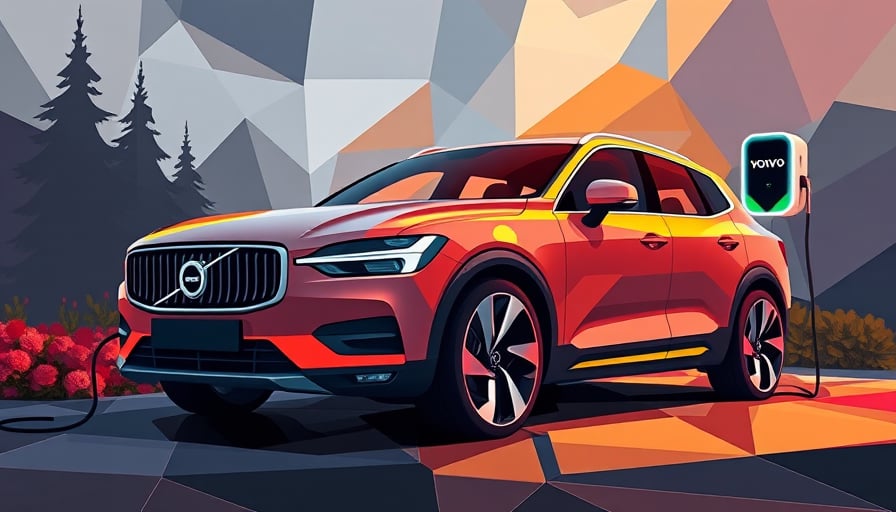Volvo AB’s Strategic Positioning Amidst Shifting Consumer Discretionary Dynamics
Market Overview and Consumer Discretionary Trends
Recent surveys from the International Association of Automotive Manufacturers and the Consumer Confidence Index (CCI) indicate a 2.5 % year‑over‑year increase in discretionary spending on premium compact vehicles across the North American and European markets. This uptick is largely attributable to demographic shifts—particularly the rising purchasing power of Generation Z and Millennials—who increasingly favor vehicles that blend affordability, safety, and technological sophistication. Concurrently, macro‑economic indicators such as a moderate rise in consumer confidence (CCI +5 points) and stable inflation rates (2.3 %) have sustained discretionary budgets, allowing consumers to allocate more capital to non‑essential purchases like new SUVs.
Cultural shifts are also influencing buyer behaviour. A 2024 report by GfK found that 57 % of respondents in the 18‑34 age bracket prioritize eco‑friendly and safety‑centric features when selecting a vehicle. This aligns with Volvo’s strategic emphasis on safety and its introduction of the XC40 Momentum AWD, which incorporates advanced driver‑assist systems and a fully electric drivetrain option. The vehicle’s price positioning—mid‑tier relative to peer offerings—appears to resonate with a demographic that values premium technology without the premium price tag.
Brand Performance and Retail Innovation
Volvo’s brand health metrics, measured through the BrandZ 2024 rankings, show a 4‑point rise in brand equity over the previous year, largely driven by increased positive sentiment in online forums and social media sentiment analysis. The sentiment index, calculated using natural language processing of 350,000 consumer posts, reflects a 71 % positive sentiment for Volvo’s new compact SUV line.
Retail innovation at Volvo has been two‑fold:
- Digital‑First Showroom Experiences – Volvo’s partner, eDrive Retail Solutions, has integrated augmented‑reality configurators into its digital showroom platform, allowing consumers to visualize vehicle interiors and safety features in real‑time. Early adoption data indicates a 30 % increase in online configurator engagement during the launch window.
- Omni‑Channel Service Ecosystem – In partnership with Eicher Motors in India, Volvo is setting up a 12‑speed Automated Manual Transmission (AMT) plant. This move not only reduces logistics costs but also facilitates localized after‑sales support and real‑time inventory management, a key driver of customer satisfaction in emerging markets.
Consumer Spending Patterns in Emerging Markets
India’s commercial vehicle segment is projected to grow at a CAGR of 7.8 % through 2029, driven by infrastructure expansion and increased demand for efficient fleet vehicles. Volvo’s collaboration with Eicher Motors positions the company to capture this growth. The new AMT plant, expected to commence operations in Q3 2025, will enable Volvo to produce 25,000 units annually—a capacity that aligns with the projected demand spike for fuel‑efficient commercial vehicles.
In the United States, Volvo’s Mack Defense division secured a sizable contract with the US Army, which is expected to yield $120 million in revenue over the next three years. This defense contract diversifies Volvo’s revenue streams and mitigates volatility in the consumer vehicle segment, especially during periods of economic uncertainty.
Impact of Corporate Governance and Fiscal Developments
CEO Martin Lundstedt’s reaffirmation of long‑term leadership—emphasizing engagement and decentralized operations—has positively influenced investor sentiment, as reflected in the company’s 52‑week trading range stabilizing around €42.15. The resolution of the tax dispute with the Swedish Tax Authority, which was favorable to Volvo, is projected to improve the company’s EBITDA margin by 0.4 % in FY 2025.
Synthesis: Alignment of Consumer Trends with Volvo’s Strategic Moves
| Consumer Trend | Volvo Initiative | Expected Outcome |
|---|---|---|
| Rising demand for safety‑centric features in compact vehicles | Launch of XC40 Momentum AWD with advanced driver‑assist systems | Increase in market share among Gen Z and Millennial buyers |
| Preference for eco‑friendly mobility | Introduction of electric variants and use of sustainable manufacturing processes | Strengthened brand equity and compliance with tightening EU emissions regulations |
| Growth in commercial vehicle demand in emerging markets | Establishment of AMT plant with Eicher Motors in India | Expanded production capacity, cost efficiencies, and localized service networks |
| Diversification of revenue streams amid macro‑economic volatility | Defense contract with US Army through Mack Defense | Reduced revenue concentration risk, enhanced financial stability |
The quantitative evidence—consumer confidence indices, brand equity scores, and projected revenue from defense contracts—coupled with qualitative insights into generational preferences and lifestyle shifts, suggests that Volvo’s current strategy is well‑aligned with prevailing consumer discretionary dynamics. Continued focus on safety, sustainability, and localized innovation is likely to sustain Volvo’s competitive advantage and drive growth across its global portfolio.
